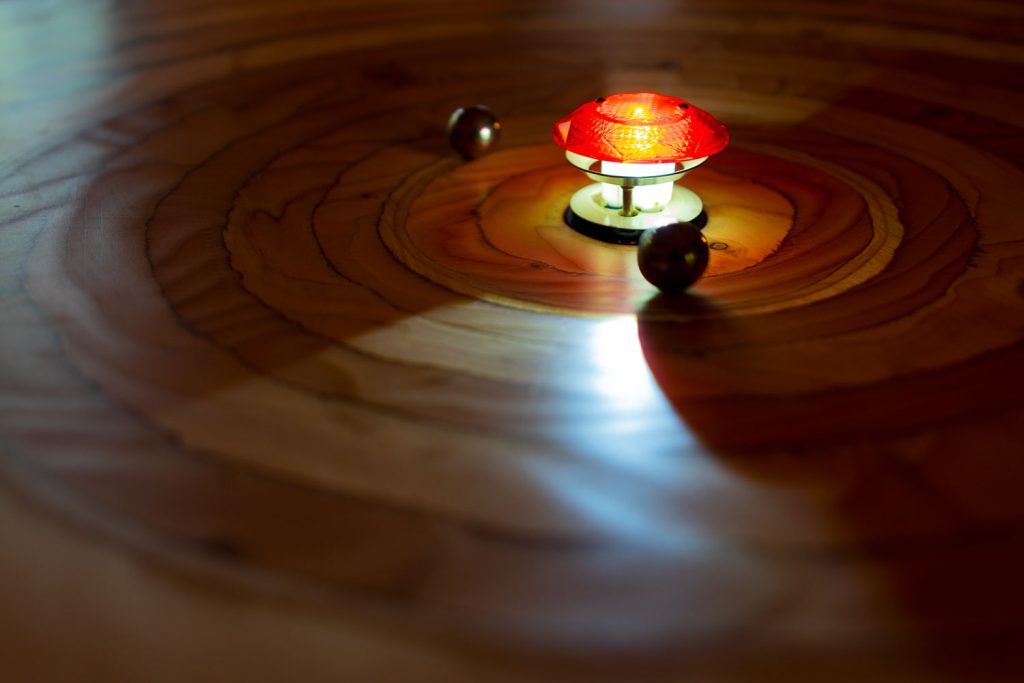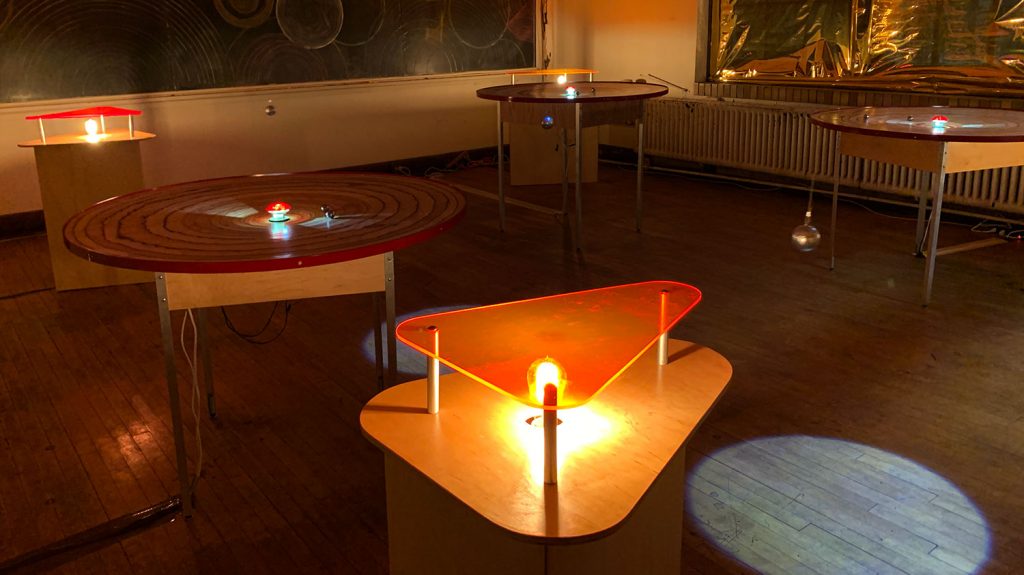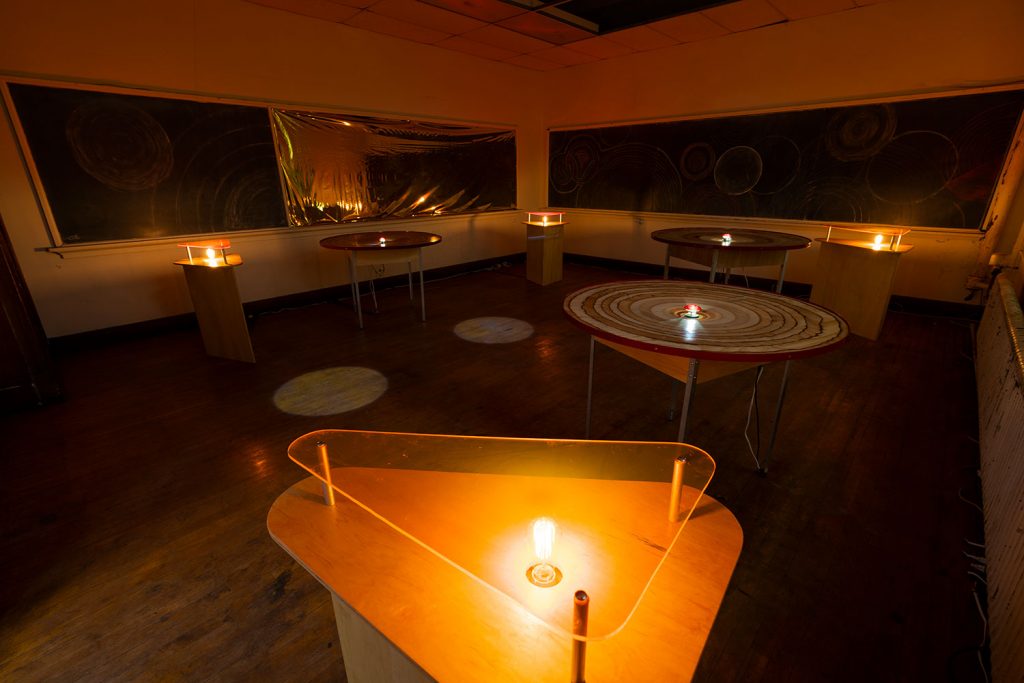Limitless Distance Between is a collection of works meant to foster an environment where an audience can interact with familiar objects that employ notions of time and space.
A pinball machine is a know commodity. They have existed for a hundred years and at some point in everyone eventually interacts with one. There are slight variations for device to device, but generally they all draw on the same mechanisms and concepts. The mechanisms of pinball machines have a consistent feel that we have come to expect.
The rules of pinball are the rules of physics. The tactile, analogue, and physical nature of pinball machines contrasts the digitally predictable and pre-programmed regularity of video games. Where video games feature a succession of levels an sometimes complex narratives, interacting with a pinball machine is a struggle against physics for time itself. A score is kept, but the ultimate reward is simply the length of time the ball is kept in play. We are all too familiar with the constant struggle against time and our place in the universe.
The Playfields, the table surfaces, were built with layers of plywood glued together then routed out into a concave surface. As the pinballs spiral around the table gravity brings them to the center where the pop-bumber sends them back out in decaying orbits.
A pinball machine is also an example of a Chaos Engine. Where computers lack the ability to generate a truly random number a pinball machine is a model of deterministic chaos. The silver ball ricochets off the bumpers in a way that can’t be fully predicted. From the 1940s through the 1970s they were illegal in New York City. New York’s mayor Fiorello La Guardia banned them, raided arcades and smashed them with a sledge hammer. It was felt that their inherent chance made them gambling machines. It was decades before players were able to convince city hall that skill influenced the outcomes of the games.











A car struck the street light in front of my house causing the bulb to break off from the pole and swing like a pendulum. The light swinging in front of the houses functioned like a chaotic metronome.

